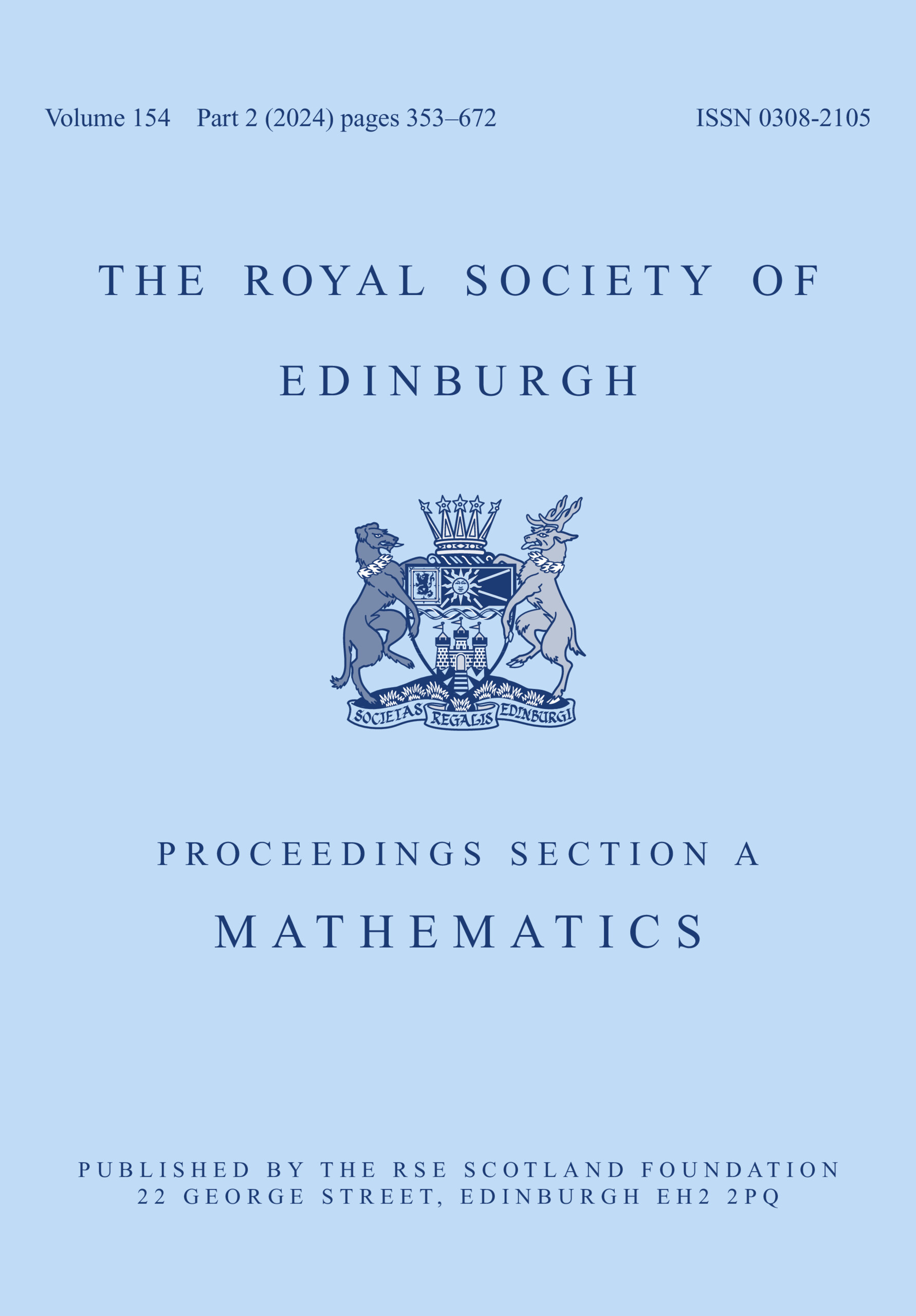No CrossRef data available.
Article contents
Ground state solution for weakly coupled time-harmonic Maxwell’s equations with critical exponent
Published online by Cambridge University Press: 18 July 2025
Abstract
In this paper, we deal with the following nonlinear time-harmonic Maxwell’s equations \begin{equation*}\nonumber\begin{cases} \nabla \times(\nabla \times u_1)=\mu_1|u_1|^4u_1+\beta|u_1||u_2|^3u_1 & \text {in } \mathbb{R}^3, \\ \nabla \times(\nabla \times u_2)=\mu_2|u_2|^4u_2+\beta|u_1|^3|u_2|u_2 & \text {in } \mathbb{R}^3, \end{cases}\end{equation*}
\begin{equation*}\nonumber\begin{cases} \nabla \times(\nabla \times u_1)=\mu_1|u_1|^4u_1+\beta|u_1||u_2|^3u_1 & \text {in } \mathbb{R}^3, \\ \nabla \times(\nabla \times u_2)=\mu_2|u_2|^4u_2+\beta|u_1|^3|u_2|u_2 & \text {in } \mathbb{R}^3, \end{cases}\end{equation*} $\nabla\times$ denotes the usual curl operator in
$\nabla\times$ denotes the usual curl operator in  $\mathbb{R}^3$,
$\mathbb{R}^3$,  $\mu_1,\mu_2 \gt 0$, and
$\mu_1,\mu_2 \gt 0$, and  $\beta\in\mathbb{R}\backslash\{0\}$. We show that this critical system admits a non-trivial ground state solution when the parameter β is positive and small. For general
$\beta\in\mathbb{R}\backslash\{0\}$. We show that this critical system admits a non-trivial ground state solution when the parameter β is positive and small. For general  $\beta\in\mathbb{R}\backslash\{0\}$, we prove that this system admits a non-trivial cylindrically symmetric solution with the least positive energy. We also study the existence of the curl-free solution and the synchronized solution due to the special structure of this system. These seem to be the first results on the critically coupled system containing the curl-curl operator.
$\beta\in\mathbb{R}\backslash\{0\}$, we prove that this system admits a non-trivial cylindrically symmetric solution with the least positive energy. We also study the existence of the curl-free solution and the synchronized solution due to the special structure of this system. These seem to be the first results on the critically coupled system containing the curl-curl operator.
Keywords
Information
- Type
- Research Article
- Information
- Copyright
- © The Author(s), 2025. Published by Cambridge University Press on behalf of The Royal Society of Edinburgh.


